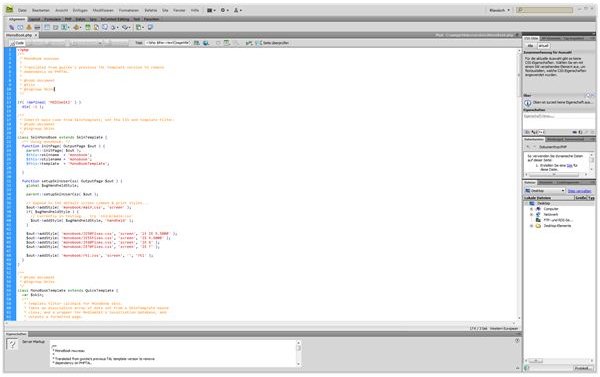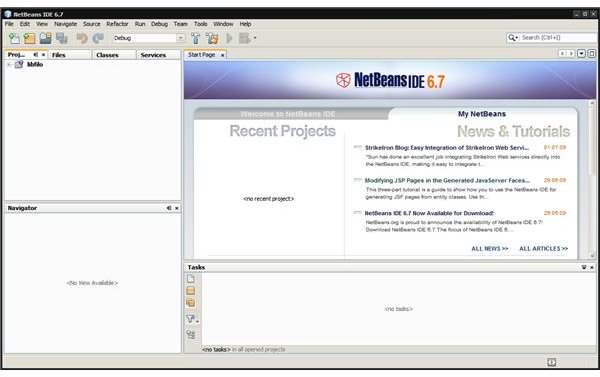What is an Integrated Development Environment (IDE)?
What is an Integrated Development Environment (IDE)?
An Integrated Development Environment (IDE) is a software application that helps the developer in developing, debugging, testing and managing files while creating an application. An IDE consists of
-
Source code editor,
-
A complier and/or interpreter,
-
Debugger, and
-
Tools to build the executable
An integrated development environment allows the developer to concentrate more on the functionality of the application that is being developed rather than concentrating on the core code. Modern day Integrated Development Environments assist the developer in developing applications by allowing him to drag and drop objects on the form or the canvas of the application that he is developing. This allows him to write lesser lines of code and increase the visual appeal of the application. This also greatly reduces the time taken by the developer to create an application. The developer can then link those objects or attach events to them or add functions. IDEs allow more than one developer to work and modify the same application simultaneously(thus the development time and the testing time is greatly reduced). By providing APIs (Application Programming Interfaces), the IDEs let the developer to add just a few lines of code and significantly modify the entire program. IDEs like Eclipse and Netbeans offer support for various languages like C, C++, JAVA, PHP, PERL, Python, Ruby, Ada, etc.
With the rise of internet and networking and its ever growing popularity, IDEs have started offering support for networking, databases and web design and development features. Dreamweaver and Expression Web are the top two IDEs that are used for designing and developing webpages. However these IDEs cost a lot. IDEs like Eclipse and Netbeans are free (Links are provided at the end of this article).
Image Credit: Wikipedia
Features:
IDEs make the life of a developer a whole lot easier by providing lots of very useful tools and features like:
Syntax highlighter,
Auto completion,
Plugins,
Templates,
Drag and drop utilities,
Compilers/ Interpreters,
Linkers and Loaders,etc

Image Credit: Wikepedia
Disadvantages:
-
Learning Curve - In order to use an IDE, one has to get familiar with all the components and the APIs provided by the IDE. Also, one has to get familiar with the user interface as the user interfaces of IDEs are always complex. Once the developer knows his way around the interface and is familiar with the IDE, coding will be more fun than before. So it is not a good idea for beginner programmers to use IDEs.
-
Memory Constraints - IDEs occupy a lot of disk space. They need lots of memory when they run because many threads start running simultaneously. This maybe a problem for the developers who use PCs that run with less memory.
- Fixing Code Structures - No matter how much the life of a developer is made easier by providing APIs, IDEs are still inefficient when it comes down to efficient coding. They do not detect logical errors or bad structures of code.
Some Top Integrated Development Environments (There are Free Ones too):
Free IDEs:
Trial Versions:
Conclusion: Thus an integrated development environment makes the life of a developer a lot easier but it is not recommended for beginner programmers. It is good to choose one IDE, get familiar with it and use that IDE for a long time instead of switching IDEs which is not really recommended.
